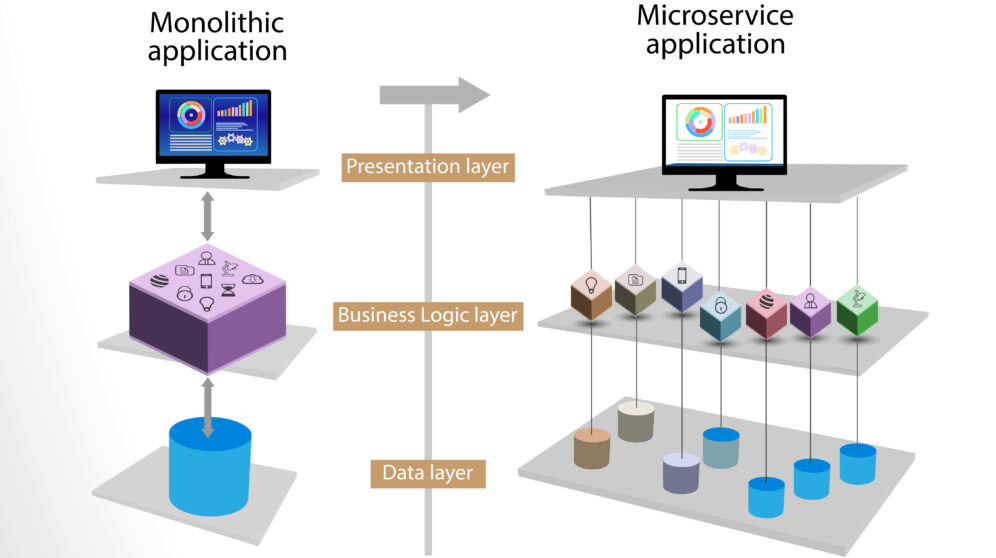Microservices architecture is a modern approach to building applications composed of small and independent services. When hosted on cloud infrastructure, it leverages the scalability and cost-efficiency of the cloud for its deployment, offering a wide range of opportunities to make applications more agile, extensible and secure. This type of architecture structures the application into components or micro-services representing business capabilities or subdomains such as payments, subscription management or order management, with access to their database and deployed independently. The loosely coupled nature of these services ensures they can be developed, tested and ran autonomously, allowing for interaction with each other through APIs. Microservices architecture is especially beneficial for large applications, the ease of decoupling components of the application allows for faster software updates and performance optimization. Enterprises and organizations of all sizes rely on and adopt this approach to building their applications as they can scale as needed, release features, optimize performance and enhance their data security.
Unlike the monolithic architecture approach which is less versatile compared to its counterpart, fault isolation is a huge benefit of the micro-services system. If a single service is compromised, the rest of the larger application remains secure. This degree of flexibility is an advantage that provides a modern, agile and scalable approach to problem-solving over traditional software architecture. With increased benefits comes additional complexity, since micro-services need to be designed, built, managed, secured, monitored, tested and deployed independently, it can lead to longer implementation hours depending on the size and scale of the solution. For larger systems with lots of components, debugging, problem-solving and testing can become complicated, requiring a different level of expertise for engineers.
Identifying as well as understanding where and when an architecture will provide a business advantage is a critical piece of any cloud development journey. An important point to consider is the type and complexity of the application, taking an initial step to analyze how the different components within the application need to communicate to perform their respective functions is key to making informed decisions. In general, large-scale applications with several microservice-enabled components (e.g multiple concurrent users needing access to frequently updated components, and allowing the flexibility of updates without disrupting other parts’ access to application data) are strong candidates for the architecture. Additionally, considering the application’s technical needs and availability requirements will guide architecture decisions. Ultimately, the goal is to utilize the architecture that provides added value without unnecessary complexity.
Designing, building and deploying microservices in the cloud is an undertaking that requires careful thought, planning, execution and alignment with business requirements. As microservices rely on distributed computing across several components, organizations need to consider factors such as scalability, security, elasticity, cost optimization and design principles that are appropriate for their particular project needs. Once the architecture is designed, it should be built following best practices and standards to fully leverage the scalability potential of the cloud. Deployment on a cloud platform could be achieved manually or through automated processes, with CI/CD and specialized deployment tools, configuration files can be created, adjusted and reflected automatically.
In improving microservice operations and preventing unnecessary outages or slowdowns, it is important to have a well-defined system that details debugging techniques and processes and also provides tools and guidelines for keeping services healthy in the long term. Embracing the use of monitoring and logging tools for debugging gives real-time visibility to service behaviour, allowing identified issues to be addressed quickly and preventing unexpected outages. With lots of advanced monitoring third-party tools and/or capabilities offered by cloud providers, organizations and engineering teams can confidently get insight into their service operations and runtime performance.
Finally, with the increase in popularity of the microservice system in building software, and its flexibility and scalability advantage when compared to other software architectural approaches, organizations of all sizes will continue to adopt this method over the alternative as an effective approach to building and maintaining their applications efficiently and reliably. While challenges and complexities will be present for larger applications with more services, overcoming them can be achieved with the right knowledge and skill.
